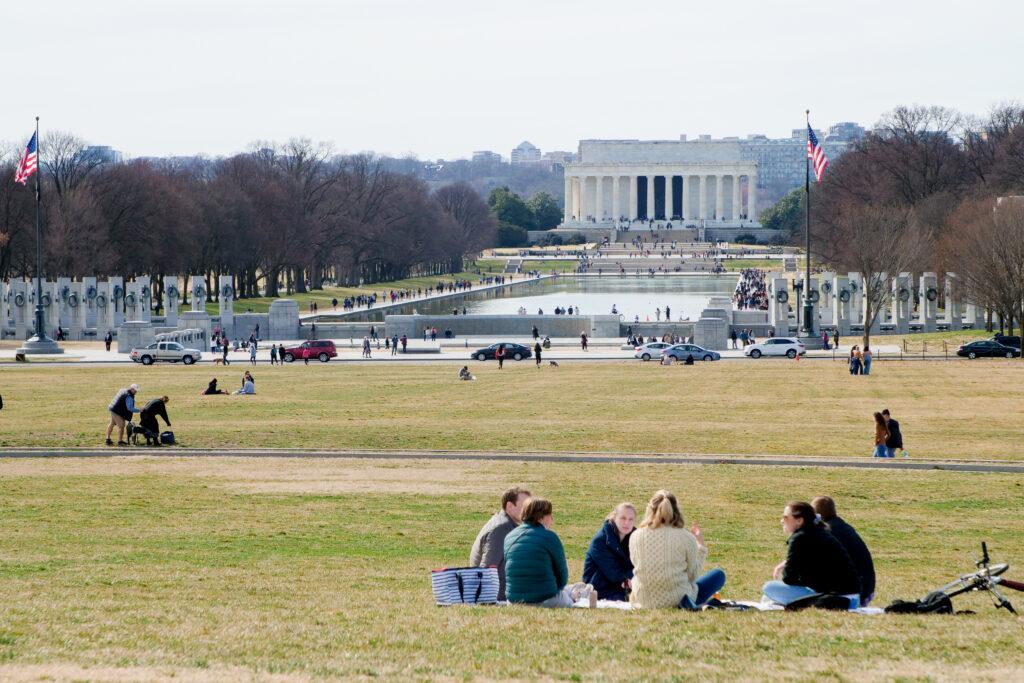The Smithsonian Institution has selected two sites for the National Museum of the American Latino and the American Women’s History Museum to be built over the course of the next 10 to 12 years.
The proposed sites, which were announced Oct. 27, are located in the southwest section of the National Mall in Washington, D.C. The first site is located across from the National Museum of African American History and Culture, and the second site is next to the United States Holocaust Memorial Museum. The National Park Service owns the undeveloped land where the museums will be located, but the Smithsonian has yet to decide which museum will be built on which site.
After Congress approved the museums in December 2020, the Smithsonian’s Board of Regents had until December 2022 to propose official building sites, according to David Coronado, the senior communications officer for the National Museum of the American Latino. The Board of Regents chose from a pool of over 24 potential sites, including the current FBI headquarters. Coronado said construction may take up to 12 years to complete, an estimate guided by the construction timelines of museums such as the African American History and Culture Museum, which was established in December 2003 and opened Sept. 24, 2016.

Madeleine Weyand-Geise, a public affairs assistant for the Smithsonian, said the new museums are part of the institution’s plan to create a more complete narrative of American history.
“To deepen the understanding of our shared history, the Smithsonian engages the public with a wide range of exhibitions, programs, and research,” Weyand-Geise wrote to The Hoya. “We aim to tell a fuller, more complete American story, a narrative so complex and expansive that it requires multiple museums to tell it.”
District residents and members of Congress like Rep. Carolyn Maloney (D-N.Y.) spoke out in the months after Congress approved the museums, part of a years-long effort to see the new museums constructed along the National Mall, where other museums dedicated to American culture and history already stand.
“When I walk around the Mall, they have museums for everything — but not women,” Maloney said in a March 17, 2021 press release. “And it is hard to empower women if we don’t even recognize them.”
President Joe Biden also called for Congress to authorize the museums’ construction on the Mall, saying the location of the museums has symbolic significance to the groups they represent and the role they have played in shaping the nation.
“Congress should take action to honor the Latino community and women with their own museums on the National Mall — it’s time — as a reflection of the important role each plays in the fabric of our Nation,” Biden said at the White House’s Hispanic Heritage Month Reception on Sept. 30.
Smithsonian executives first considered the idea for a museum similar to the National Museum of the American Latino in the mid-1990s, and Congress established a commission to study the potential creation of the museum in 2008, according to Coronado.
The National Museum of the American Latino opened its first exhibit “¡Presente! A Latino History of the United States” at the National Museum of American History in the Molino Family Latino Gallery on June 18.
The gallery gives visitors to the National Museum of American History a first look at the project’s future, according to Jorge Zamanillo, director of the National Museum of the American Latino.
“The Molina Family Latino Gallery is the first iteration of the National Museum of the American Latino,” Zamanillo said in a June 14 press release. “It will take 10 to 12 years to open a museum building, but the gallery gives the public a preview of the museum’s potential.”
Eduardo Díaz, the acting deputy director of the National Museum of the American Latino, said the gallery’s opening comes at a landmark time, marking the 25-year anniversary of the foundation of the Smithsonian Latino Center, which was established in order to increase Latino representation across the Institution.
Coronado said he believes the museum will be an important reminder of the cultural and historical impacts Latino communities have made on American history.
“The National Museum of the American Latino is essential to preserving the history and culture of the Latino communities that make up 19 percent of the U.S. population,” Coronado wrote to The Hoya. “The museum reminds us that Latino history is intrinsic to American history.”





















gender studies • Nov 5, 2022 at 1:25 pm
LATINX!!!!! not latino!!!! stop opressing trans folx!!!!!!